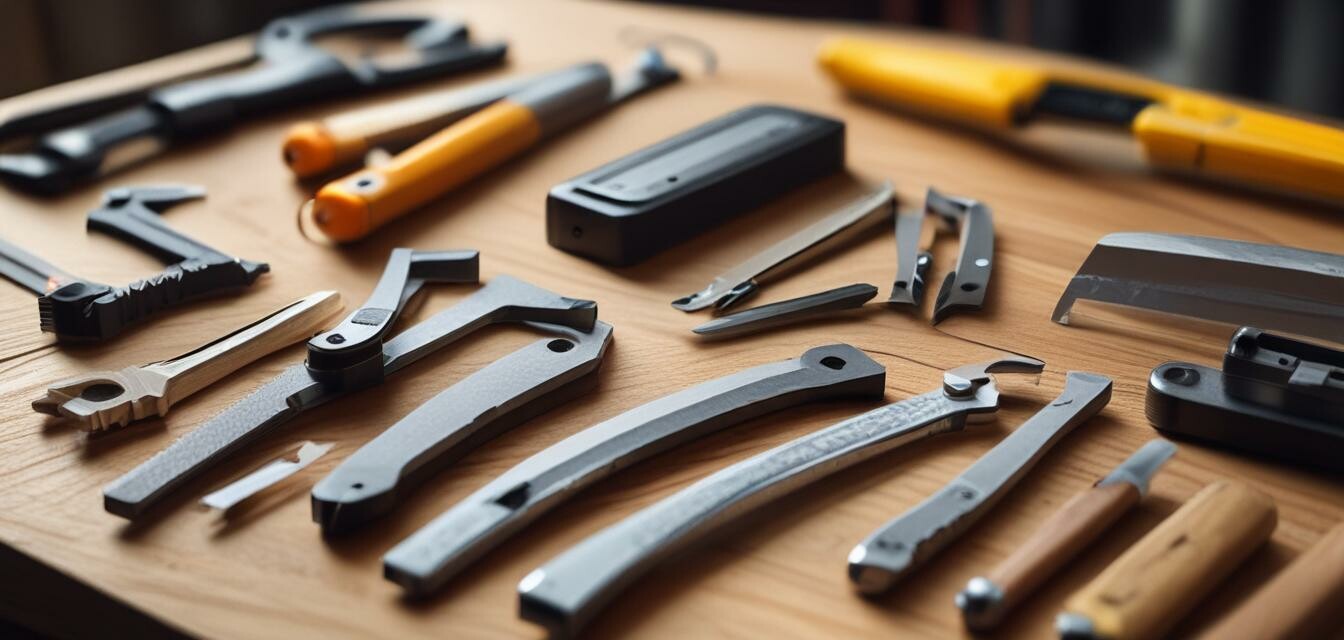
Safe Operating Practices for Sawing Tools
Key Takeaways
- Always wear appropriate personal protective equipment (PPE).
- Ensure your tools are well-maintained and inspected before use.
- Keep your workspace organized and free from hazards.
- Follow the manufacturer's recommendations for each tool.
- Be aware of the safety features included in your tools.
Sawing tools are essential for various DIY projects and professional work, providing efficiency and precision. However, operating these tools also requires critical safety practices to avoid accidents and ensure effective use. In this guide, we'll cover the best practices and safety tips for operating saws properly and safely.
Understanding Different Types of Sawing Tools
Before delving into safety practices, it’s essential to understand the different types of sawing tools available:
| Type of Saw | Description |
|---|---|
| Hand Saws | Manual saws used for small projects, ideal for precise cuts. |
| Power Saws | Electric or battery-powered saws for larger tasks, providing speed and efficiency. |
| Circular Saws | Commonly used for straight cuts on various materials, usually portable. |
| Jigsaws | Ideal for cutting intricate shapes and curves in wood or other materials. |
| Band Saws | Versatile saws for both straight and curved cuts on various materials. |
Essential Safety Equipment
Using sawing tools safely starts with the right safety equipment. Here are the essentials:
- Safety Glasses: Protects your eyes from flying debris.
- Ear Protection: Reduces noise exposure during operation.
- Gloves: Offers grip and protection, but choose appropriate types (avoid loose-fitting gloves).
- Dust Masks: Filters harmful dust particulates when cutting materials.
- Steel-Toe Boots: Protects your feet from falling objects.
Best Practices for Safe Operation
Following these best practices can significantly decrease the chances of accidents:
- Pre-Operational Checks: Inspect your tools for any defects before use.
- Clear Your Work Area: Keep the workspace tidy and free from potential hazards.
- Secure Your Material: Ensure the workpiece is firmly and safely secured before cutting.
- Follow Manufacturer Instructions: Always adhere to guidelines provided by the tool manufacturer.
- Use the Right Tool for the Job: Each tool has its specific use; ensure you are using the appropriate one for your project.
Keeping Your Tools Maintained
Regular maintenance of your sawing tools is crucial for safety and longevity. Consider the following maintenance tips:
- Clean your tools after every use to remove sawdust and debris.
- Inspect blades for damage and replace them as necessary.
- Lubricate moving parts regularly to ensure smooth operation.
- Store tools in a dry, clean environment to prevent rust and deterioration.
Emergency Procedures
Even with the best safety practices, accidents can occur. Knowing what to do in an emergency is essential:
- Stay calm and assess the situation.
- Turn off the tool immediately.
- Call for help if necessary.
- Do not attempt to move a severely injured person until help arrives.
Final Thoughts
By following these safe operating practices and understanding the basics of sawing tools, you can ensure a safer working environment while achieving effective results. Safety should always be the first priority, whether you are a contractor or a DIY enthusiast. Explore more about our tips on how-to guides to enhance your skills with portable power tools.
Pros
- Improves precision and speed of cuts.
- Enhances safety awareness.
- Prolongs tool lifespan with maintenance.
- Facilitates effective project completion.
Cons
- May require initial investment for safety equipment.
- Learning curve for proper tool use.
- Potential for accidents without proper training.
